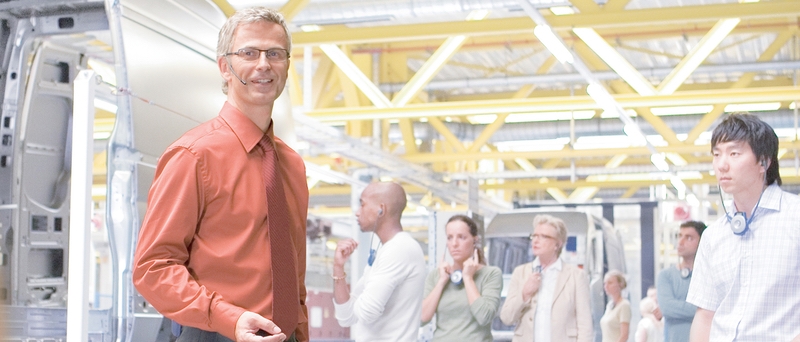How to get the best from your tour guide system
Tour guide systems enable you to provide professional and effective communication with guests. As with any technology, it is important the system is used correctly according to the event. Prior to an event it is advisable to familiarise yourself with the equipment to ensure that it is configured and set up correctly to avoid any disruptions.
It is essential to make sure that the devices are charged, or if using alkaline batteries that these are replaced, if required.
Make sure the correct microphones are used for the application. If the presenter needs to remain hands-free to demonstrate products or point to objects, then a lapel or head-worn microphone will be required. These would normally connect to a bodypack transmitter. These transmitters often have an audio connection to connect to external audio for example a laptop or smartphone. If external audio is required to be transmitted, make sure a suitable auxiliary lead is available. Whilst on a tour, a pre-recorded commentary can be played to give the presenter’s voice a break and keep the participants engaged. This could be to provide invaluable information about historical facts or business information relevant to the tour.
If there are to be multiple presenters, then a handheld microphone transmitter can be more suitable, as it can be easily and quickly passed between people.
Ensure the correct number of receivers are available and that the headsets are suitable for the environment. There are various options available including single earphone (that covers one ear only), disposable earphones (that are inserted into each ear and are then retained by the guests after the tour, to avoid hygiene issues), lightweight headphones or noise reduction headphones (for use in noisy environments, including factory and plant tours). Some receivers can accept a neck worn inductive loop to assist hearing aid wearers. The participant wears the neck loop and sets their hearing aid to the ‘T’ setting - the audio is then induced directly into their hearing aid.
If multiple tours are to be conducted at the same time, then it is essential that the transmitter(s) and receivers for each tour group are programmed to a unique channel to avoid any cross-over or interference.
It is advisable to plan the tour or event thoroughly, considering group size, layout, routes and running order. This will help determine the correct quantities of transmitters, microphones, receivers and headsets required. Where possible, a practice tour is recommended to highlight any problems and to ensure the event runs smoothly.
To summarise:
Make sure:
• You are familiar with the equipment.
• All units are charged (if rechargeable batteries), or batteries replaced (if alkaline batteries).
• You select suitable transmitters and microphones for the application/environment.
• The correct leads are available (e.g. to connect to a laptop or smartphone)
• The correct type and number of receivers/headsets are available
• The transmitters and receivers are programmed to the correct channels (if there are multiple tour groups make sure each system is operating on a different channel to avoid any cross-over or interference)
• You have a practice tour with the system prior to the event
The system handbooks are available from the download section. If you have any questions then please contact us.
Tags: tour guide systems, microphones, headsets, headphones



